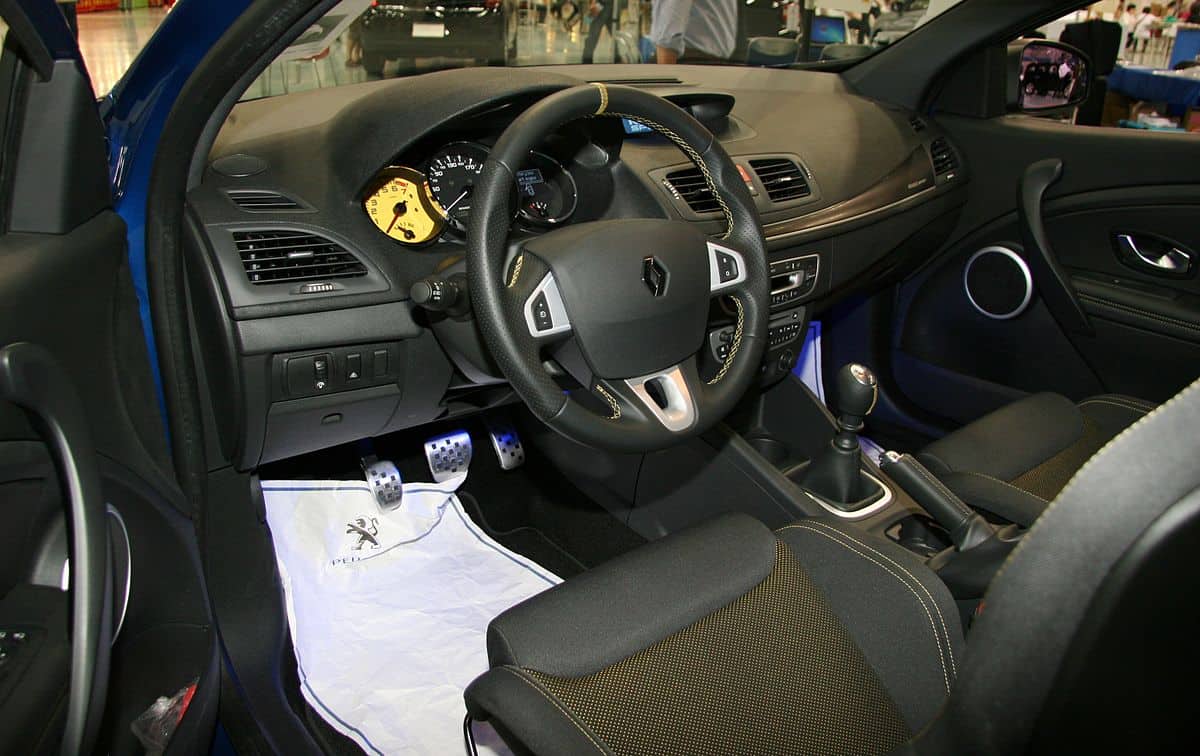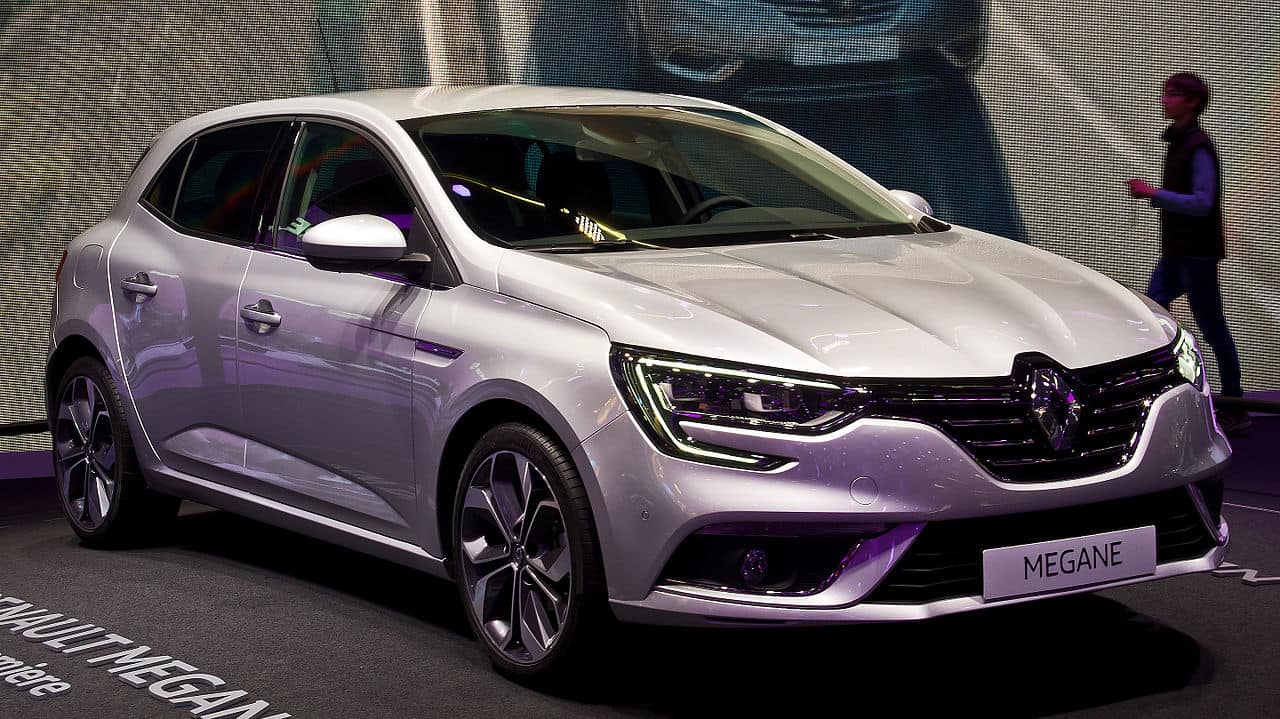There probably has never been a car in history that has changed so much over the years than Renault’s Megane. Neither has there been a car in history that has seen so many model revisions. Back when the 2008 Megane launched, we got a coupe version and a hatchback version, alongside the regular model. And since then, we’ve seen this formula tweaked.
But what the Renault really wants is a car that can emulate the success that the company had back in the early 2000s. In 2003, the then Megane racked up 200,000 sales in France. That’s more than Ford managed to rack up in Britain when the country was experiencing peak-Mondeo. Matters were helped by the fact that that Megane was one of the first cars in the world to get a 5-star safety rating. But it was also a genuinely exciting car for the time. And people haven’t forgotten it.
Fast-forward a decade and a half and the world has changed. The Megane can no longer rely on the coupe market to pull through on the Megane. It’s had to set its focus elsewhere. That focus has come in the form of the Megane hatchback, new for 2016.
Owning
One of the biggest advantages of owning the Megane today is the service network. As sites like www.renaultretail.co.uk make clear, support for Renault cars is almost universal. Traditionally, Renault has been seen as one of the most expensive carmakers on the servicing front. But the company has put enormous effort into undoing this perception. Now it has adopted many of the practices of rivals like Kia and Toyota to promote vehicle longevity. For instance, it’s started using higher quality materials and parts. Thus, the Megane needn’t be the drag on your wallet that it used to be.
What’s so amazing about the new Megane Hatch is the value proposition. Renault has churned out a car that is actually better value than its leading competitors. Spec-for-spec, you’ll get a better deal with a Megana than with either a Golf or a Focus. And given that both of those cars ship at volume, that’s no mean feat. You’ll also be pleased to find out that running costs are low. In fact, the diesel Megane is more fuel efficient than the Focus. And that puts it in a very special class indeed.
Renault as always has paid significant attention to the security of its vehicles. And the same holds true for the Megane hatch. The car comes with the usual complement of side and curtain airbags. And it also comes with stability control. Stability control is a particularly important feature for this car since it’s targeted at new drivers.
On The Inside
Today’s Renault still fancies itself as a bit of a techno-orientated company. When we think of automotive technology, we tend to think of the Teslas and the Mercedes of the world. But Renault has been quietly bringing high-tech equipment into its budget cabins. The Megane is no exception. The bottom-of-the-range Expression+ comes with a whole host of features often found on high-end models. You get USB and Bluetooth of course, as well as air conditioning and alloy wheels, which isn’t bad. But if you go one step up, the goodies start coming thick and fast. The Dynamique trim version gets sat-nav, keyless entry and automatic wipers. Range-topping models also come with parking sensors and body kits. But whether these are worth it depends on your love of the brand. If you’re looking for a Megane, go for the GT trim. If you’re just looking for a hatch, stick with the Dynamique.

Unfortunately, it’s not all good news when it comes to the car’s interior. Sure, for the price it comes better specced than most in the equipment department. But it’s let down by the bodywork of the car at the back. The problem the Megane has is that the roof slopes down. This means that sitting in the back is cramped for taller people. It’s a shame, in a way, since this design feature is unnecessary. However, the lack of space on the back seats is compensated by the more than ample boot space. And it’s here where the appeal of the Megane Hatch becomes apparent. Of course, the hatchback version of the car had to have a big boot. And fortunately, Renault has delivered.
Driving Performance
Now to the part that we’ve all been waiting for. How does this thing actually perform on the road? Recently honestjohn.co.uk put the car through its paces. They found that the car was surprisingly fast, especially the diesel version. Petrol engines come in 1.6 version without a turbo and a 1.2 and 2.0, both with turbos. Diesel engines come in both 1.5 and 1.6 versions. Of the petrol engines, the 1.2 seems to be the most promising. It doesn’t require the same sort of revving you need in the 1.6. If fuel economy is a concern, either of the diesel engines will do the trick. And both of them are consistent performers.
The handling of the Megane is a love it, or hate it, affair. Thanks to the stability control system, the car is easy to handle in the corners. But some critics have argued that this takes some of the fun out of the experience. Sure, it’s grippy and accurate. But because there’s not much in the way of driver feedback, it all feels a little lacklustre. There’s an easy response to this criticism, however. This isn’t a car that’s being marketed to compete with the Golf R or the Focus RS. This is a car that’s designed to satisfy the average driver, and that means having something that is predictable and reliable.
So why do we still love the Renault Megane Hatch? It’s well priced and comes with loads of gadgets and equipment. It’s also efficient and good looking. No, it might not have some of the prestige of its rivals. But it doesn’t need to: there’s still room for the Megane.

